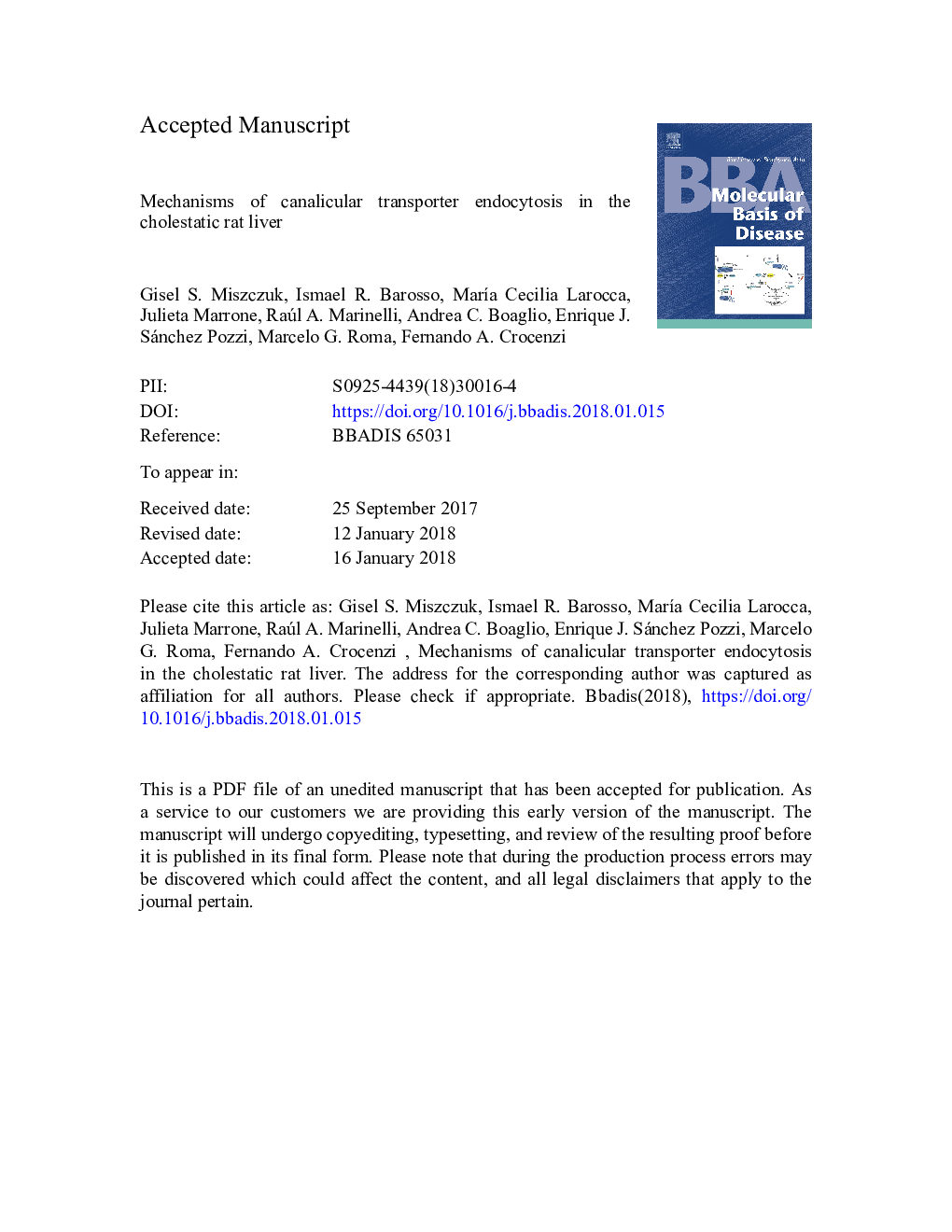| Article ID | Journal | Published Year | Pages | File Type |
|---|---|---|---|---|
| 8258571 | Biochimica et Biophysica Acta (BBA) - Molecular Basis of Disease | 2018 | 35 Pages |
Abstract
Impaired canalicular secretion due to increased endocytosis and intracellular retention of canalicular transporters such as BSEP and MRP2 is a main, common pathomechanism of cholestasis. Nevertheless, the mechanisms governing this process are unknown. We characterized this process in estradiol 17 β-d-glucuronide (E17G)-induced cholestasis, an experimental model which partially mimics pregnancy-induced cholestasis. Inhibitors of clathrin-mediated endocytosis (CME) such as monodansylcadaverine (MDC) or K+ depletion, but not the caveolin-mediated endocytosis inhibitors filipin and genistein, prevented E17G-induced endocytosis of BSEP and MRP2, and the associated impairment of activity of these transporters in isolated rat hepatocyte couplets (IRHC). Immunofluorescence and confocal microscopy studies showed that, in E17G-treated IRHC, there was a significant increase in the colocalization of MRP2 with clathrin, AP2, and Rab5, three essential members of the CME machinery. Knockdown of AP2 by siRNA in sandwich-cultured rat hepatocytes completely prevented E17G-induced endocytosis of BSEP and MRP2. MDC significantly prevented this endocytosis, and the impairment of bile flow and biliary secretion of BSEP and MRP2 substrates, in isolated and perfused livers. BSEP and MRP2, which were mostly present in raft (caveolin-enriched) microdomains in control rats, were largely found in non-raft (clathrin-enriched) microdomains in livers from E17G-treated animals, from where they can be readily recruited for CME. In conclusion, our findings show that CME is the mechanism responsible for the internalization of the canalicular transporters BSEP and MRP2 in E17G-induced cholestasis. The shift of these transporters from raft to non-raft microdomains could be a prerequisite for the transporters to be endocytosed under cholestatic conditions.
Keywords
Related Topics
Life Sciences
Biochemistry, Genetics and Molecular Biology
Ageing
Authors
Gisel S. Miszczuk, Ismael R. Barosso, MarÃa Cecilia Larocca, Julieta Marrone, Raúl A. Marinelli, Andrea C. Boaglio, Enrique J. Sánchez Pozzi, Marcelo G. Roma, Fernando A. Crocenzi,
